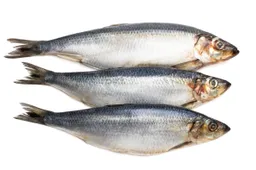6 nutteloze lichaamsdelen, die zijn overgebleven van de evolutie
Wetenschap
Ooit liepen we op vier benen, klommen we in bomen en hadden we een staart. Hoewel die tijd reeds ver achter ons ligt, zijn er nog steeds lichaamsdelen die herinneren aan die periode. Evolutionair antropoloog Dorsa Amir noemt zes 'evolutionaire overblijfselen'. Dit is een spier die over je pols loopt. Als je een vuist maakt, kun je hem zien. Bij veertien procent van de mensen is de spier al verdwenen. Hij was ooit bedoeld om het vast grijpen van takken te vergemakkelijken. Dit kleine bobbeltje bovenop je oorschelp maakte het vroeger makkelijker om je oren te bewegen, maar sinds we een beweegbare nek hebben, is het niet meer nodig. Ons stuitje herinnert ons eraan dat we ooit een staart hadden, bedoeld voor evenwicht en beweging. Nu nog groeit er bij embryo's een staart, maar die wordt door het lichaam weer afgebroken. Dit was ooit onderdeel van een derde ooglid, dat horizontaal knipperde. Sommige katachtigen hebben het nog steeds. We krijgen kippenvel van schrik, angst, ontroering of koude. Dat onze haren dan recht overeind gaan staan, zorgt voor een extra laagje dat warmte biedt. Een baby zal vrijwel altijd je vinger vastgrijpen als je hem in zijn hand legt. Dat is een evolutionaire reflex die nog uit de tijd stamt waarbij het belangrijk was dat een baby snel de hand van de moeder pakte.
Put your hand flat on a surface and touch your pinky to your thumb. Do you see a raised band in your wrist? That there’s a vestigial muscle called the palmaris longus. It used to help you move around the trees. About 14% of us don't even have this muscle anymore. (2/8) pic.twitter.com/ZF3Ta91IGy
— Dorsa Amir (@DorsaAmir) 15 januari 2019
Check out your ear. Do you see this little bump? That’s called Darwin’s tubercle. It used to help you move your ears around. Now that we have super-flexible necks, we don’t need these anymore. (3/8) pic.twitter.com/2OlVWEu6gT
— Dorsa Amir (@DorsaAmir) 15 januari 2019
Here’s a more obvious one: the tailbone. This is the ghostly remainder of our lost tails, which were useful for balance & movement in trees. We still grow tails as embryos, but then attack and destroy them in the following weeks. Not the most efficient system. (4/8) pic.twitter.com/pmF2lCpnyT
— Dorsa Amir (@DorsaAmir) 15 januari 2019
Ever wonder what this little pink thing in your eye is? This is the plica semilunaris. It used to be a third eyelid that would blink horizontally. You can see this in action in the eyes of many other animals. (5/8) pic.twitter.com/0ubMulahA0
— Dorsa Amir (@DorsaAmir) 15 januari 2019
Oh, and you know how you sometimes get goosebumps when you’re cold or scared? That’s a vestigial reflex that used to raise body hair to make you appear bigger or trap an extra layer of heat for warmth. Some people can actually do this on purpose. (6/8) pic.twitter.com/uY2zJddguy
— Dorsa Amir (@DorsaAmir) 15 januari 2019
Another cool reflex is the palmar grasp reflex. If you place your finger on an infant’s palm (or feet!), they will try to grasp it. Ancestral primate babies would have used this to grasp on to their parents for transport. (7/8) pic.twitter.com/LFpN1ykSug
— Dorsa Amir (@DorsaAmir) 15 januari 2019
Bron(nen): The Independent
POPULAIR NIEUWS

Drie vissen om vaak te eten, drie vissen om te mijden

Pesticide-eetwijzer: welk fruit en welke groente zit vol gif? Welke juist niet?

Wetenschappers kunnen tanden laten groeien: "Revolutie in de tandheelkunde'

Hardloopster 'zeker weten' aangevallen door wolf: "Wanneer gaan we stoppen met dit zieke experiment"

Angstaanjagend: de Amerikaanse rente stijgt door angst voor de malligheid van Trump
